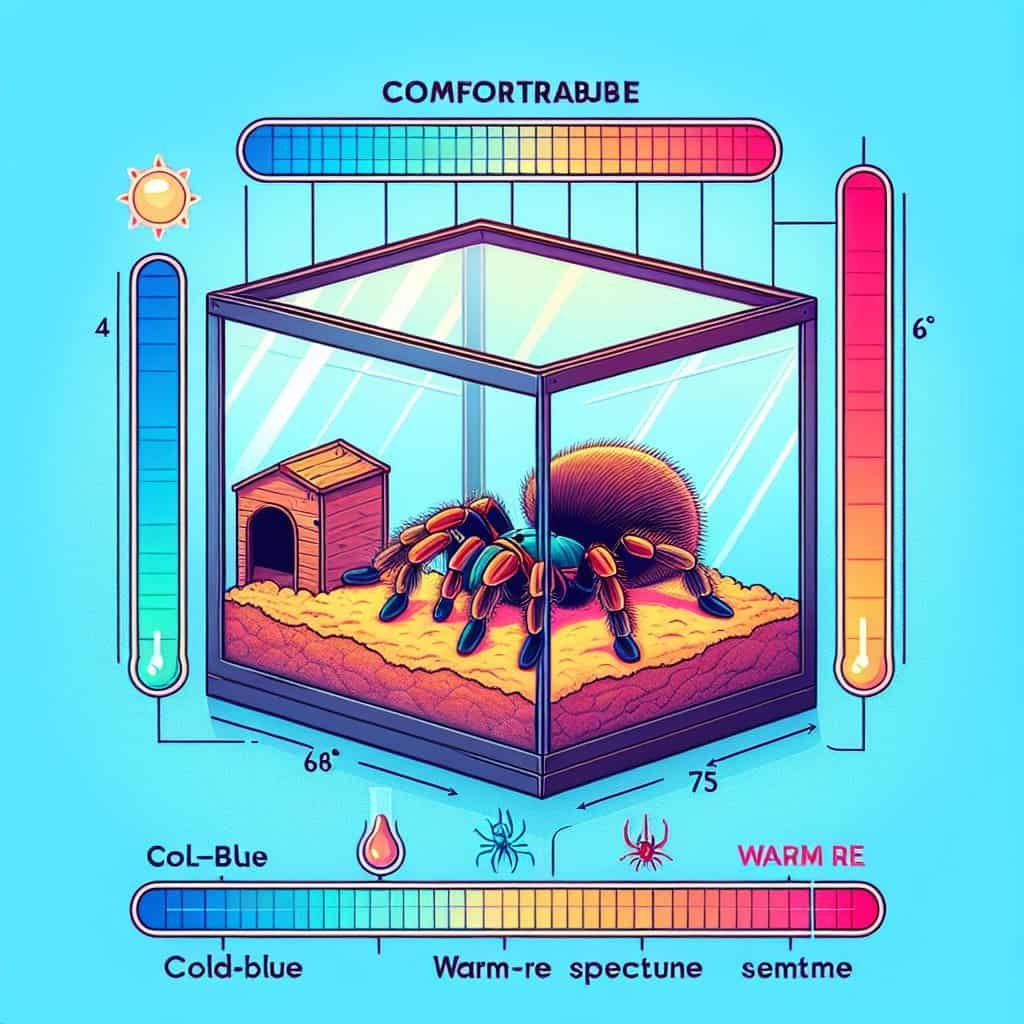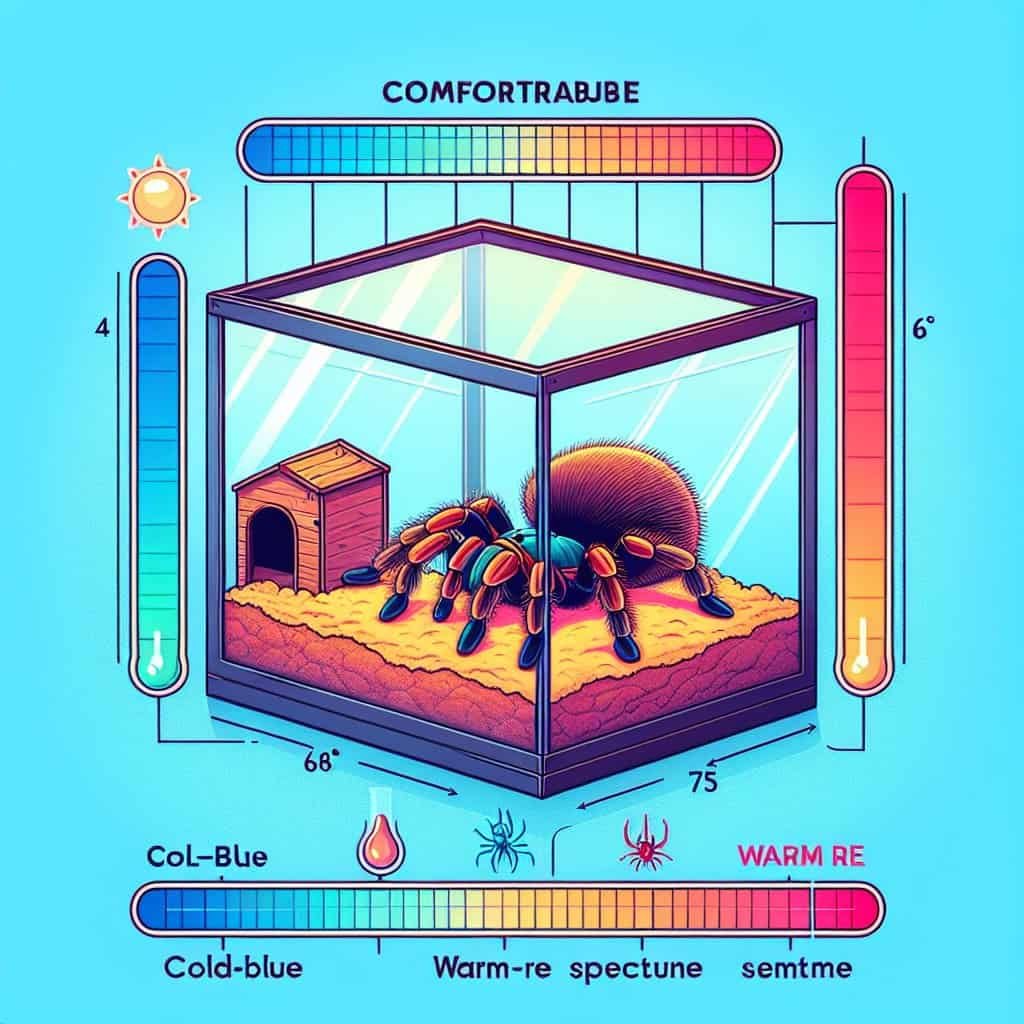Keeping tarantulas as pets can be a fascinating and rewarding experience, but ensuring their wellbeing and longevity requires understanding their ideal temperature requirements. As cold-blooded creatures, tarantulas depend on the surrounding temperature to regulate their bodily functions. In this article, we will explore the ideal temperature range for keeping tarantulas as pets, providing you with valuable insights and tips to create an optimal environment for these intriguing arachnids. So, grab a cozy seat and prepare to learn how to keep your eight-legged companions happy and healthy!
Introduction
Keeping tarantulas as pets can be a rewarding and fascinating experience. These eight-legged creatures require specific temperature conditions to thrive in captivity. Understanding the factors that affect tarantula temperature needs and creating the right temperature environment in their enclosures is essential for their well-being. In this article, we will explore the various factors that influence tarantula temperature requirements, recommend the ideal temperature range for tarantulas, discuss different methods to create the right temperature in their enclosures, and highlight common mistakes to avoid in tarantula temperature management.
Factors Affecting Tarantula Temperature Needs
1. Native Environment
The native environment of tarantulas plays a significant role in determining their temperature needs. Tarantulas come from diverse geographical locations such as deserts, rainforests, and grasslands. Each habitat has its own temperature conditions, and tarantulas have adapted to thrive in these specific climates. For example, desert-dwelling tarantulas usually require higher temperatures, while those from rainforest environments thrive in slightly lower temperatures.
2. Species-Specific Requirements
Different species of tarantulas have varying temperature needs due to their unique biological characteristics. Some species are more adaptable to a wide range of temperatures, while others have very specific requirements. It’s essential for tarantula owners to research the specific species they are keeping to determine their ideal temperature range.
3. Maturity Level
Tarantulas have different temperature needs as they progress through their life stages. Juvenile tarantulas generally require slightly warmer temperatures compared to adults. This is because their metabolism is higher, and they are more active. As tarantulas mature and reach adulthood, their temperature requirements may decrease slightly.
4. Activity Level
The activity level of a tarantula can also affect its temperature needs. Active tarantulas, such as those constantly moving or burrowing, may require slightly higher temperatures to maintain their energy levels. On the other hand, less active tarantulas may require slightly lower temperatures as they conserve energy.

Recommended Temperature Range for Tarantulas
1. Overall Ideal Range
In general, the ideal temperature range for most tarantulas falls between 75°F (24°C) and 85°F (29°C). This range provides a comfortable environment for a wide variety of species. It’s important to maintain stable temperatures within this range to prevent stress and health issues.
2. Optimal Temperatures for Specific Species
While the overall ideal temperature range is a good starting point, it’s crucial to determine the specific temperature requirements of the tarantula species you have. Some tropical species prefer temperatures between 80°F (27°C) and 85°F (29°C), while desert-dwelling species may require temperatures between 85°F (29°C) and 90°F (32°C). Researching the specific needs of your tarantula species will help ensure their optimal well-being.
Creating the Right Temperature in Tarantula Enclosures
1. Using Heat Mats or Pads
Heat mats or pads can be a reliable method to provide consistent heat to tarantula enclosures. These mats are placed under the enclosure and emit gentle heat, mimicking the warmth tarantulas would experience in their natural habitats. Ensure that the heat mat covers only a part of the enclosure, allowing the tarantula to move away if it desires a cooler area.
2. Heat Bulbs or Lamps
Heat bulbs or lamps can be an effective way to create warmth in tarantula enclosures, particularly for species that require higher temperatures. These bulbs emit heat and light, creating a temperature gradient within the enclosure. It’s important to use a dimmer switch or a thermostat to regulate the temperature and prevent overheating.
3. Ceramic Heaters
Ceramic heaters are another option for providing warmth in tarantula enclosures. These heaters generate heat without emitting light, making them useful for species that prefer lower light conditions. They can be attached to the side or upper part of the enclosure and should be paired with a thermostat to maintain the desired temperature.
4. Room Temperature Control Measures
Controlling the room temperature where the tarantula enclosure is located is another way to maintain the proper temperature. Air conditioning, heating systems, or even adjusting the ambient temperature of the room can help ensure the ideal temperature range for your tarantula. However, it’s important to avoid placing the enclosure near drafty windows or areas with direct sunlight, as they can create temperature fluctuations.

Monitoring and Adjusting Temperature
1. Using Thermometers
Monitoring the temperature inside the tarantula enclosure is crucial for maintaining optimal conditions. Use digital thermometers with probes to accurately measure the temperature at different spots within the enclosure. Place the thermometer probe at substrate level, as it represents the temperature the tarantula experiences.
2. Temperature Regulating Devices
To ensure consistent temperature conditions, consider using temperature regulating devices such as thermostats or hygrostats. These devices can automatically adjust the heat source to maintain a desired temperature range. They provide greater accuracy and peace of mind, especially if you need to leave your tarantula unattended for extended periods.
Common Mistakes to Avoid in Tarantula Temperature Management
1. Extreme Temperature Fluctuations
Avoid subjecting your tarantula to extreme temperature fluctuations as it can lead to stress, weakened immune system, and even death. Sudden changes in temperature can have detrimental effects on your tarantula’s health. Gradual adjustments and maintaining a stable temperature range are key.
2. Overheating Enclosures
Overheating the tarantula enclosure can have severe consequences. It can lead to dehydration, increased metabolic rate, and even thermal burns. Always use temperature regulating devices and monitor the temperature regularly to prevent overheating.
3. Reliance on Inaccurate Heating Methods
Using inaccurate heating methods, such as regular household lamps or heating pads without temperature control, can result in incorrect temperature readings and unsuitable conditions for your tarantula. Invest in proper heating equipment and always prioritize the well-being of your tarantula.

Effects of Incorrect Temperature on Tarantula Health
Incorrect temperature conditions can have adverse effects on tarantula health. If the temperature is too low, tarantulas may become sluggish, lose appetite, and have difficulty molting. On the other hand, if the temperature is too high, tarantulas may become stressed, dehydrated, and more susceptible to diseases. Maintaining proper temperature ranges is crucial for their overall well-being.
Conclusion
Providing the right temperature conditions is essential for the health and well-being of pet tarantulas. Understanding the factors that affect their temperature needs and following recommended temperature ranges for different species will help create a comfortable environment. Using appropriate heating methods, monitoring and adjusting temperature, and avoiding common mistakes will ensure that your tarantula thrives in captivity. Remember, maintaining the correct temperature range is a key aspect of responsible tarantula care.

